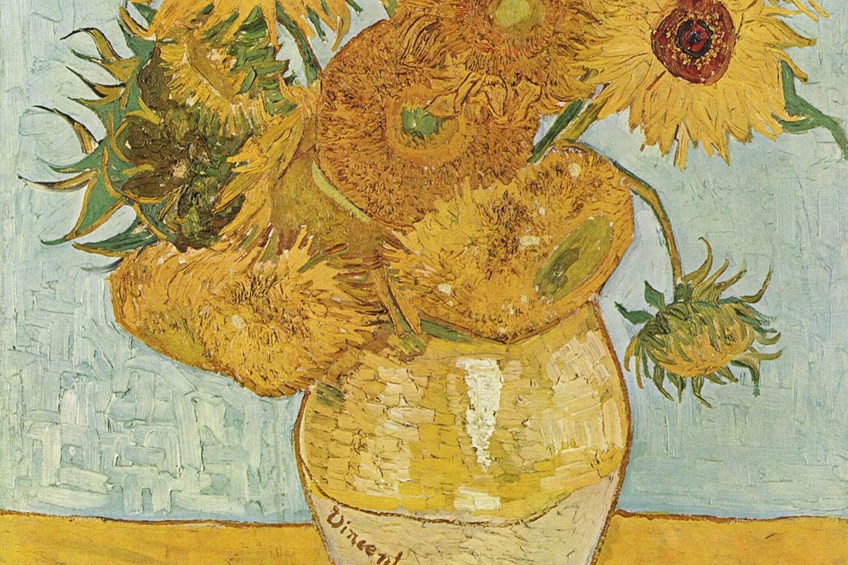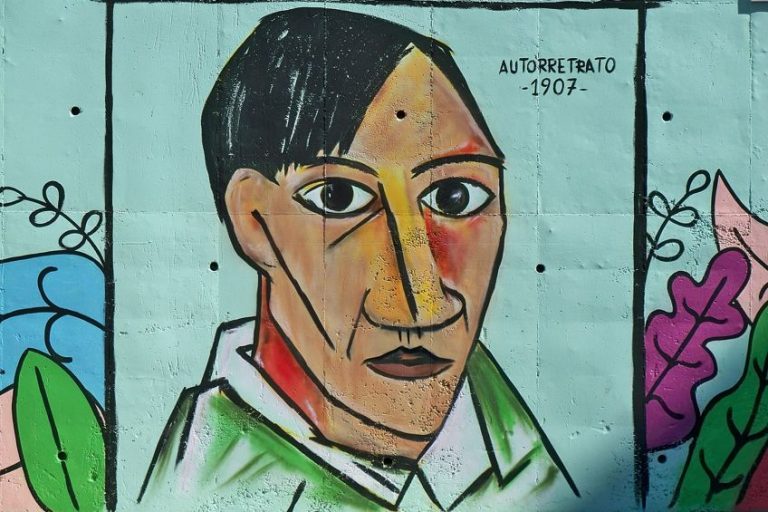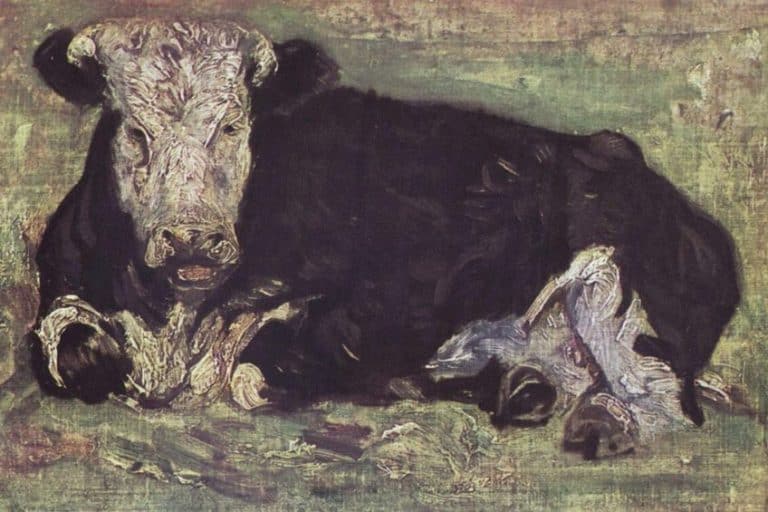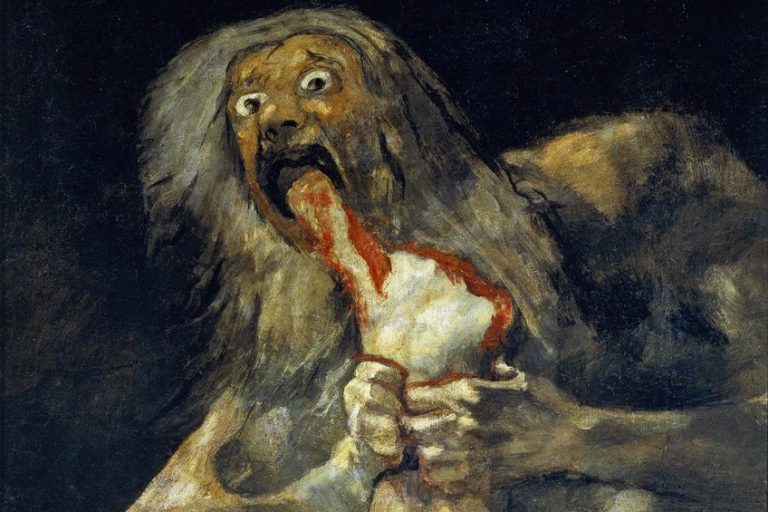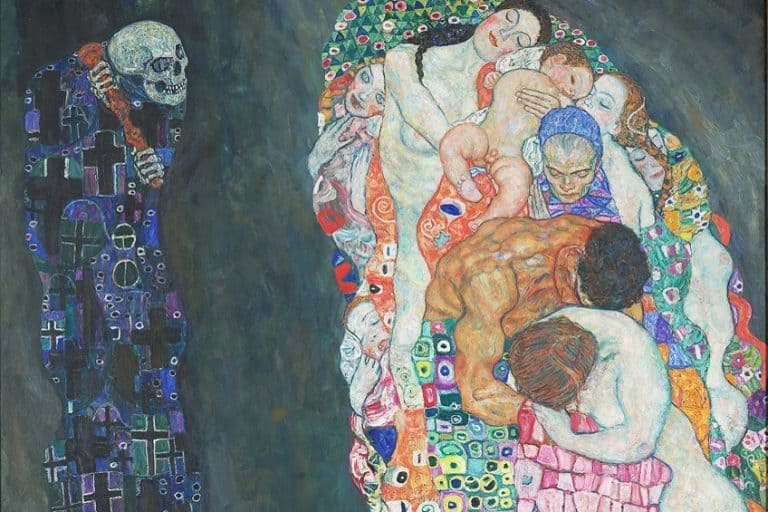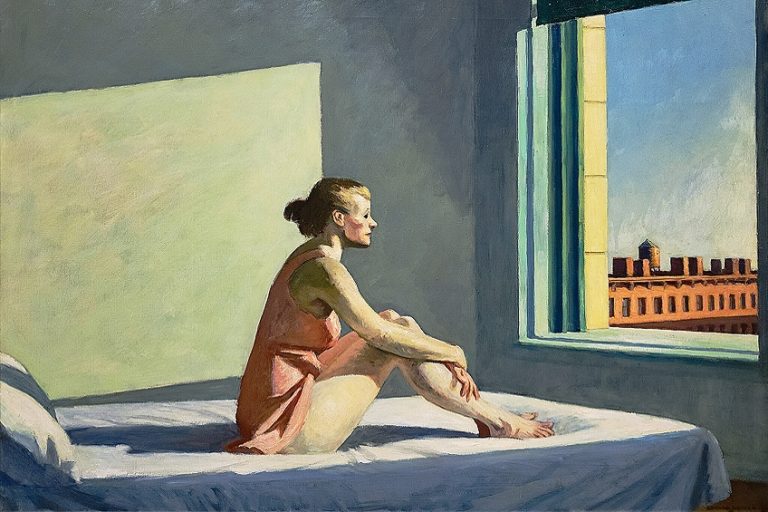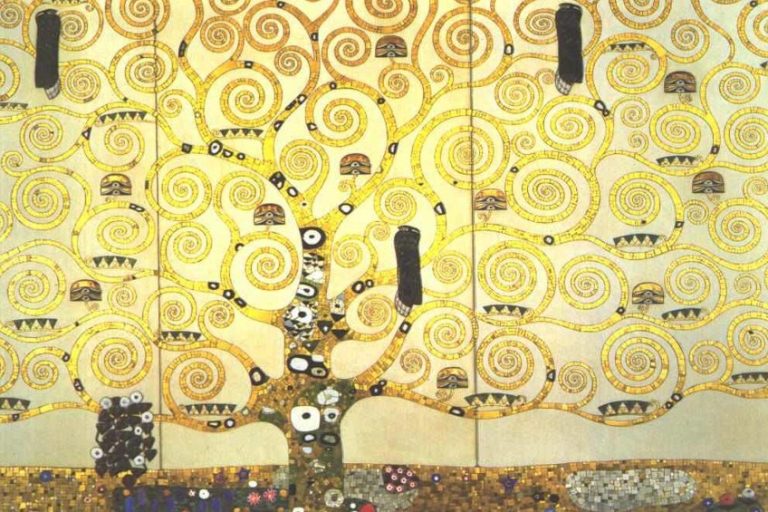Vincent van Gogh Sunflowers – Admiring Van Gogh’s Flower Paintings
If you’re acquainted with the works of the famed Dutch artist, you’ve probably seen Vincent van Gogh’s Sunflowers paintings. Sunflowers appear in several of Van Gogh’s most renowned still life paintings, whether propped up in a vase or depicted in a sunflower field. Van Gogh’s artwork frequently returned to these cheery yellow topics, resulting in two series: the Paris Sunflowers and the Arles Sunflowers. Despite their obvious differences in color scheme and arrangement, both series emphasize the artist’s love of flowers, a relationship he has maintained throughout his brief career.
Van Gogh’s Flower Paintings
Van Gogh moved to France permanently in 1886. After failing to achieve creative success in his home nation of the Netherlands, he relocated to Paris with his art dealer brother Theo. While Van Gogh did not appreciate life in Paris – he informed his brother that residing in Paris placed him at risk of growing “wholly numb” – he sought refuge in sunflowers. At this point, many sunflowers began to appear in van Gogh’s oil paintings.

Some stand-alone works, such as Allotment with Sunflower (1887) and Roses and Sunflowers (1886), do not center entirely on the blossoms; rather, they are a part of the still life or scenario. By the later part of summer in 1887, nevertheless, Van Gogh was devoting full paintings to sunflower study, as seen by his Paris series. Who was Vincent van Gogh though?
Let us begin by looking at a brief introduction of the famed artist.
Who Was Vincent van Gogh?
| Nationality | Dutch |
| Date of Birth | 30 March 1853 |
| Date of Death | 29 July 1890 |
| Place of Birth | Zundert, Netherlands |
Dutch artist Vincent Van Gogh was born on the 30th of March, 1853, as the son of a preacher in Zundert, southern Netherlands. In 1869, he started his first employment at an international art trading firm’s Hague department. He started writing to his younger brother Theo, a relationship that lasted the remainder of Van Gogh’s life. Van Gogh’s profession required him to travel to London and Paris, but he was uninterested in the task and was fired in 1876. He temporarily taught in England before becoming a pastor in a mining hamlet in southern Belgium, where he was intensely engaged in Christianity.
When he was 27 years of age, in 1880, he chose to become an artist.
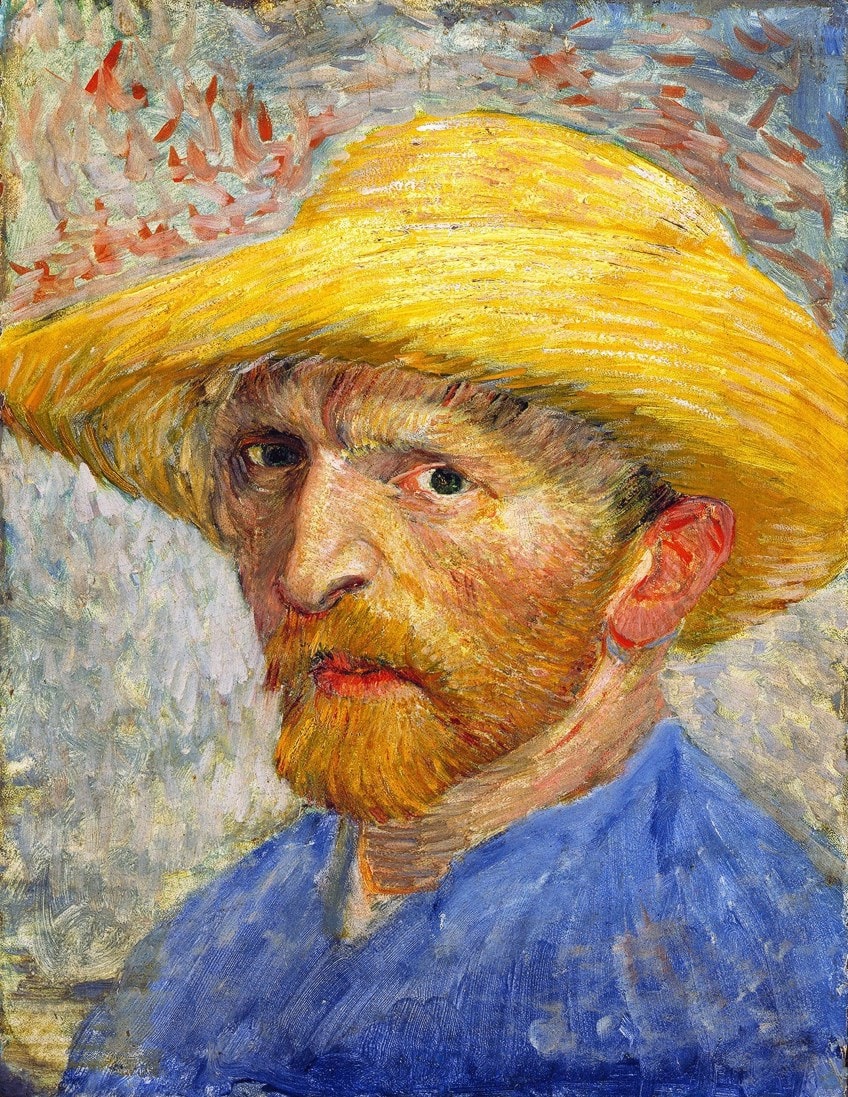
He went about learning to sketch and paint and obtaining financial assistance from Theo. Van Gogh moved to Paris with Theo in 1886, where he encountered numerous artists, including Toulouse-Lautrec, Pissarro, and Gauguin, with whom he made friends. Under the influence of Impressionism, his technique evolved substantially, becoming brighter and livelier.
During this time, he produced a huge quantity of self-portraits.
Van Gogh traveled to Provence in southern France in 1888, when he created his renowned Sunflowers series. He asked Gauguin to join him, but they quickly fell out, and one evening Van Gogh confronted Gauguin with a blade. He subsequently severed a portion of his own ear out of guilt. This was the first severe indication of the psychological health issues that would plague Van Gogh for his entire life.
He endured time in psych wards and alternated between phases of inactivity, sadness, and tremendous artistic activity, his work echoing the bright colors and powerful light of the surrounding region. Van Gogh killed himself on July 27, 1890, when suffering from despair. He passed away two days later.

Van Gogh’s desire to reveal man’s and nature’s underlying spirituality culminated in a mix of technique and content that resulted in dramatic, imaginative, repetitive, and passionate works that communicate considerably more than the subject’s simple appearance.
Despite causing him much misery throughout his existence, Van Gogh’s mental illness provided a frantic foundation for his passionate depictions of his surroundings, imbuing each painting with a deeper underlying psychological expression and importance.
Van Gogh’s turbulent personality became connected with the romantic ideal of the beleaguered artist. Throughout the 20th century, his self-destructive creativity was echoed in the lives of numerous artists. Van Gogh’s subjective sentiments were portrayed via an impulsive, passionate layering of paint and symbolic colors. From Fauvism to Abstract Expressionism, these ideas and processes came to define many subsequent contemporary movements.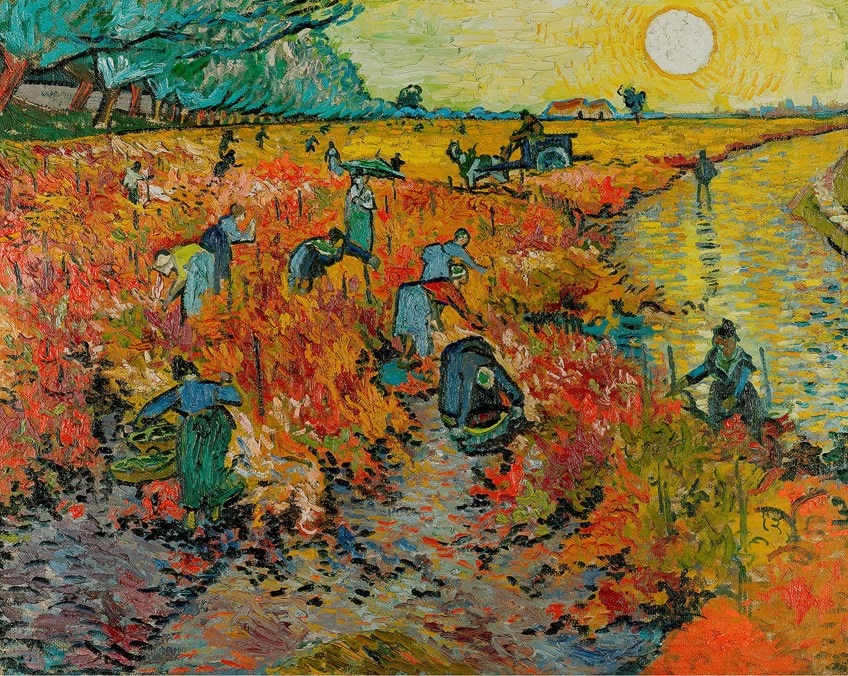
Vincent Van Gogh, the great suffering artist, worked hard to convey his spiritual and emotional state in each of his works. Despite the fact that he only sold one work of art during his entire lifetime, Van Gogh is now regarded as one of the world’s most famous artists. Van Gogh’s artworks, with their densely laden, visible brushstrokes and dazzling, opulent palettes, show his own personality brought to life in paint. Each van Gogh oil painting offers a clear feeling of how the designer experienced each scene via his vision, thoughts, and emotions.
This fundamentally distinct, expressive style impacted artists and organizations throughout the 20th century and into the present, maintaining Van Gogh’s reputation for the foreseeable future.
Vincent van Gogh’s Sunflowers Series
The topic of two series of van Gogh’s oil paintings by Vincent van Gogh is that of Sunflowers. The first set, completed in Paris in 1887, shows the flowers laying on the floor, while the second batch, completed a year later in Arles, represents an arrangement of sunflowers in a jar. Eight months later, van Gogh planned to welcome and wow Gauguin once more with Sunflowers, which had become part of the decorated guest bedroom of his house in Arles, where Gauguin was due to reside.
The Paris Sunflowers
Little is known about Van Gogh’s activity during the two years he stayed in Paris with his brother, Theo, from 1886 to 1888. The revelation that he had previously produced Sunflowers is disclosed later in the spring of 1889 when Gauguin acquired one of the Arles renditions in return for sketches he had left there upon departing Arles for Paris.
Van Gogh was annoyed and stated that Paul Gauguin had no right to make this proposal.
He said, “I will certainly keep my sunflowers in question. Allow him to be restrained by the fact that he already possesses two of them. If he is not pleased with the trade he has made with me, he can return his small Martinique painting and his self-portrait mailed to me from Brittany, while also returning my picture and the two sunflower paintings he has transported to Paris.” The two Sunflowers in dispute each have two buttons; one was followed by a little study, and a fourth huge canvas integrates both works.
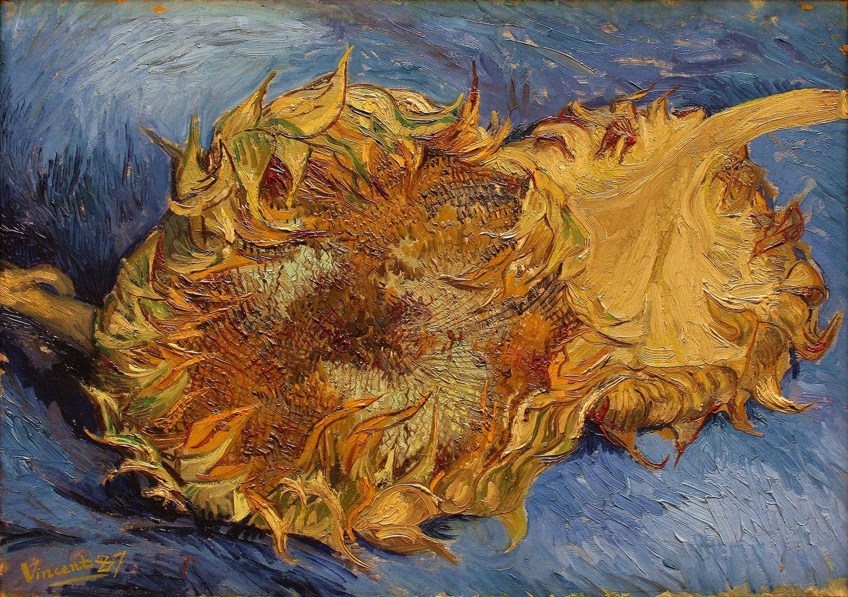
These are all Van Gogh’s first works that featured “naught besides sunflowers,” despite the fact that he had previously featured sunflowers in his landscapes and still-lifes. Van Gogh produced four sunflower still lifes while in Paris: two canvases simply named Sunflowers, van Gogh’s oil painting study called Sunflowers Gone to Seed (1887), and Four Withered Sunflowers (1887). Each painting displays cut flowers on a floor or table, highlighting the delicate detail of their heads and stalks and allowing Van Gogh to explore with hue and movement.
The Arles Sunflowers
Van Gogh had had enough of feeling “wholly numb” in Paris by 1888. So, he traveled south, eventually settling in the lovely village of Arles. He discovered new artistic inspiration in this location, inspiring him to explore and recreate his favorite Sunflower topics. He wrote to Theo on the 22nd of August 22, 1888:
“I’m creating with the enthusiasm of a Marseillais devouring goulash, which won’t astonish you when it comes to painting enormous sunflowers.”

He had three canvases on the go at the moment and planned to produce more, as he described to his brother: “I’d want to do a workshop decorating in the hopes of living in our own studios with Gauguin. Nothing just massive sunflowers “. All of the Arles Sunflowers paintings, with the exception of the first two, are painted on size 30 canvas. This fresh enthusiasm resulted in his Arles Sunflowers series, a five-piece group of flower paintings in vases.
These works vary from the Paris collection in color as well as the arrangement of the sunflowers.
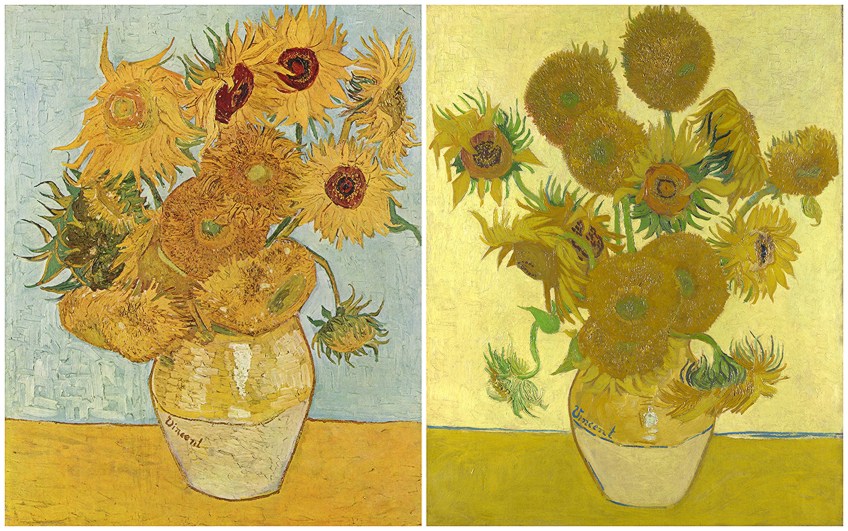
Van Gogh painted the blossoms in several hues of yellow at Arles, “proving that it was feasible to produce a composition with multiple variations of a given color, with no loss of elegance.” Van Gogh made adaptations of these two Sunflower artworks in 1889. These works, known as the Repetitions, preserve the initial compositions but show minor changes in tone and brushstrokes. Van Gogh wanted to create 12 Sunflower canvases between his originals and these Repetitions. “There will be 12 panels if I follow out my notion,” he wrote. “So the entire affair will be a yellow and blue symphony.” Why did Van Gogh want to paint such a large number of sunflowers?
This “symphony of yellow and blue,” according to the painter, would be a wonderful complement to the Yellow House, his residence in Arles, and the location of his projected artists’ community.
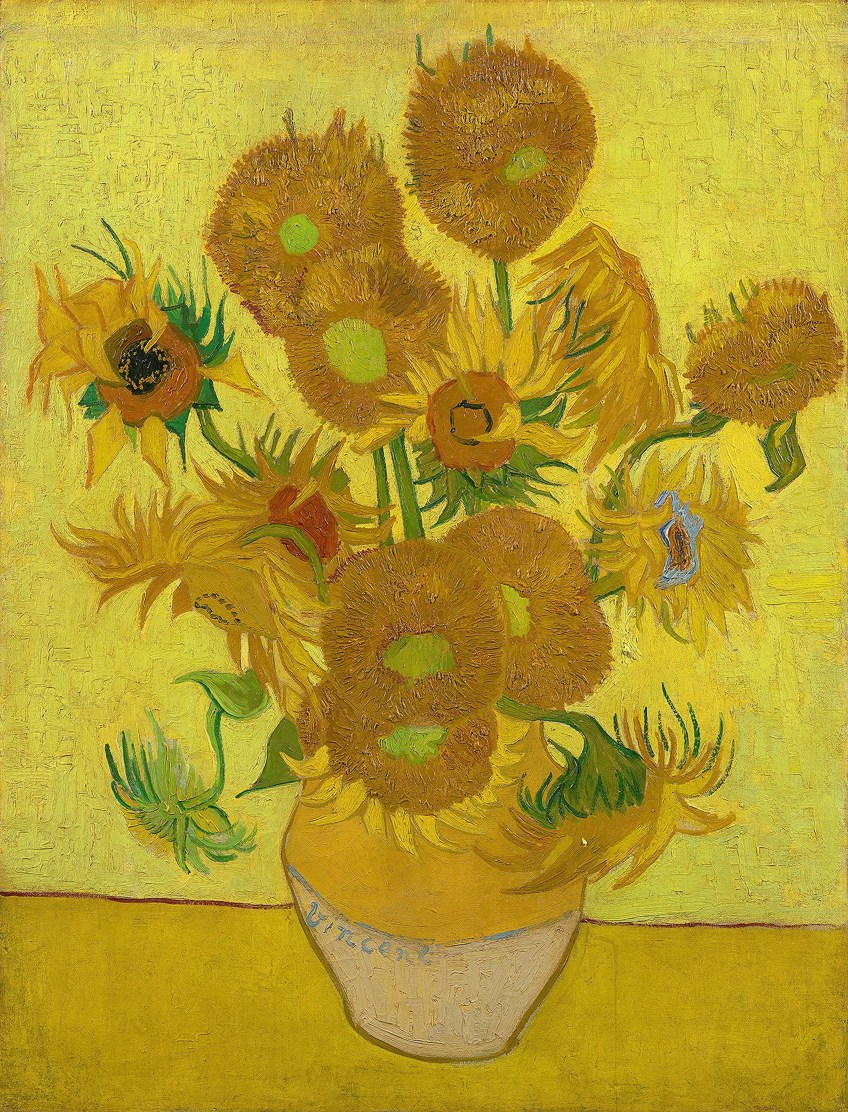
He hoped, in particular, that these embellishments would delight Paul Gauguin, his first—and final—recruit. Both repeats of the fourth version have been altered from their original condition. A piece of wood was affixed to the top of the Amsterdam edition, most likely by van Gogh personally. The Tokyo version, on the other hand, was extended on both sides with canvas strips added later – presumably by the first owner, Émile Schuffenecker.
The series is maybe van Gogh’s most well-known and often reproduced.
In the 2000s, there was a discussion about the legitimacy of one of the works, and it was argued that this rendition was the work of Émile Schuffenecker or Paul Gauguin. However, the majority of specialists believe the work is legitimate.
Though these pieces are generally regarded as a sequence, this was not Van Gogh’s intention. Two of the so-called Arles Sunflowers, in reality, were part of another series. This set of works, together with La Berceuse, a portrait of Augustine Roulin (one of Van Gogh’s frequent sitters), was to be part of a three-piece display.

In a letter, Van Gogh described their arrangement, augmenting a brief written explanation with a hasty drawing. “If you position them this way, with La Berceuse in the center and the two sunflower paintings to the left and right, it produces a type of triptych,” he explained. “And then, with the yellow wings nearby, the orange and yellow tones of the forehead will gain brightness.”
The Legacy of van Gogh’s Flower Paintings
Van Gogh’s yearning for a dozen Sunflowers, like his fantasy of a shared workshop, would not come true. He had produced seven Sunflowers at Arles by the time he died. Unfortunately, just five are still available to the public, since one has been in personal ownership since 1948 and another was lost by fire in 1945.
Even so, don’t anticipate viewing all five paintings at once. According to Van Gogh specialist Martin Bailey, the works, which are housed at Amsterdam’s Van Gogh Museum, London’s National Gallery, and other institutions throughout the globe, are improbable to be presented together.
“First and foremost, they are delicate works, and for conservation concerns, they cannot move at all or are only permitted to do so in extremely extraordinary situations,” he explains. “Secondly, these are arguably the most popular artworks in all of the galleries that possess them, therefore the institutes that own them are very hesitant to let them go.” Though their incapacity to travel may be disheartening, the experience of witnessing a single Sunflowers artwork may be even more amazing.
Interesting Facts About Vincent van Gogh’s Sunflowers Series
Many of Vincent van Gogh’s artworks featured sunflowers. We do not know why they were so important to him, yet he was convinced that the flower belonged to him (at least in the realm of art). Here are some fascinating facts about Van Gogh’s Sunflower paintings.
Van Gogh’s Sunflowers Are Among His Most Well-Known Paintings
He produced a collection of 12 of these canvases, the most well-known of which are the seven he created at Arles between 1888 and 1889. He had already produced the other five in 1887 while in Paris. There are several paintings in this series (each definitely identified as a Van Gogh work) with only small changes that distinguish them.
Incomparable works, the overall pattern of the artwork as well as the placing of the real sunflowers are frequently the same.
As Van Gogh predicted in 1889, the Sunflowers series would eventually become his most well-received works and functioned as his artful limbs and alter ego up to the current day: No retrospective Van Gogh show since 1901 has intentionally omitted them, and a plethora of reproductions, as well as a record-breaking price paid at auction, attest to their widespread success. Perhaps this is because Van Gogh’s Sunflowers are more than his or hers – they may be regarded as the flower, as Gauguin phrased it.
The Sunflower Influence
While van Gogh never mentioned why he liked sunflowers specifically, allusions to them are made in his numerous letters, which offer us an insight. In correspondence with his sister, he mentions his friend Gauguin visiting him in his yellow home in Arles. He then goes on to say that he plans to cover the entire studio with sunflowers.
Despite being designed for Gauguin, van Gogh later embraced the sunflower as his personal artistic hallmark, assuring his brother Theo in further correspondence in 1889, “the sunflower is mine alone.”
Van Gogh never produced a single Sunflowers painting. Rather, he painted several renditions of the large yellow petals in two separate series of sunflowers, one in 1887 while visiting his brother in Paris and yet another while residing in Arles from 1888 through to 1889. The fact that the blossoms are strewn about the surface in groups of two or four distinguishes the artist’s earlier Paris series from the Arles series, in which they are placed in greater profusion in a vase.
Van Gogh and Paul Gaugin Swapped Artworks
When they first convened in Paris in 1887, Van Gogh’s offering was a painting titled Sunflowers from his Paris series. The story of Van Gogh’s severed ear is intertwined with Sunflowers. Van Gogh rented accommodations in Arles, dubbed “the Yellow House,” and supplied a room for Gauguin.
He intended to adorn the space with paintings of sunflowers.
The Yellow House would also later be the site where van Gogh mutilated his ear. Gauguin portrayed van Gogh at work in a canvas titled Van Gogh Painting Sunflowers (1888) during his brief stay at the Yellow House. Sunflowers almost resulted in carnage.
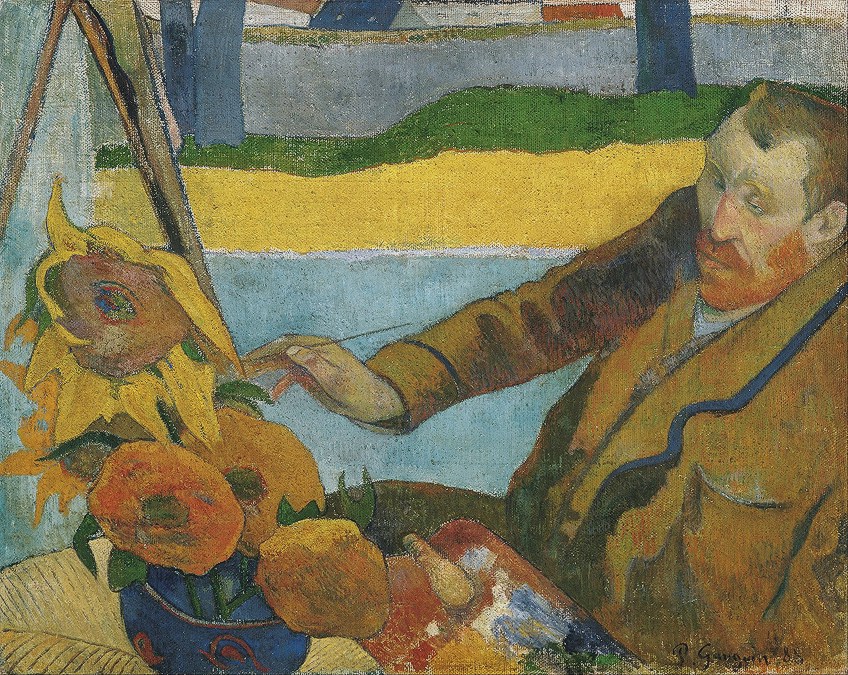
In 1890, a Belgian painter objected to having his works shown beside Sunflowers in Brussels, claiming that Vincent was a scam. Henri Toulouse-Lautrec, Vincent’s friend, overheard the derogatory comment and dared the Belgian to a battle, which never ended up taking place. One of the initial “Sunflowers” is in the National Gallery of London’s possession, and the former English Prime Minister Margaret Thatcher once requested to view Van Gogh’s chrysanthemums. Nobody had the foresight to rebuke her.
The Start of a Creative Era
When Van Gogh arrived in Arles, he began a creative era in which he injected yellow colors into his works. Several explanations have been proposed to explain this. One claim is that he drank too much absinthe, while another claims he drank too much digitalis. Yellow might have been added to what he observed by either drug. The vivid yellow oil paints used in Van Gogh’s “Sunflowers” were initially accessible in the early 19th century. He was one of the first painters to fully embrace them.
Van Gogh was not alone in his love of sunflowers. Claude Monet and Allen Ginsberg were among the other well-known artists and poets that exploited the sunflower motif.

Van Gogh’s Sequence of Paintings
Dr. Jan Hulsker claims that Vincent van Gogh started producing a sequence of paintings in 1888 “Probably more than any other of his works, he has created a name for himself across the world. They are frequently the sole works with which he is associated.”
The sunflowers are, of course, the subject of this series. Van Gogh planned his sunflower paintings as a series and worked hard on them in preparation for the arrival of his friend, Paul Gauguin, in Arles. Vincent wrote to Emile Bernard in a letter around August 21, 1888:
“I’m thinking about adorning my studio with a half-dozen sunflower paintings. A design in which severe or fractured yellows would erupt against a variety of blue backgrounds ranging from the lightest Veronese to regal blue, bordered with thin orange lead laths. Effects like stained-glass windows in a Gothic cathedral.”
Van Gogh Intended to Hang a Dozen Sunflower Paintings
Vincent had planned to hang a dozen sunflower paintings in the Yellow House, which himself and fellow artist Paul Gauguin would use as a workshop. “I’d want to undertake some studio decorating. As you recall, there’s a magnificent floral display at the restaurant next door to your business; I vividly remember the enormous sunflower in the display. So, if I carry out my design, there will be around a dozen panels. As a result, the entire thing will be a yellow and blue concerto. I work on it every morning, beginning at sunrise. Because the flowers wilt rapidly, it’s best to accomplish everything at once.” However, Vincent’s sprint against the changing seasons failed, and he was only able to produce four sunflower paintings in August 1888.
And with that, we have come to the end of our look at Vincent van Gogh’s flower paintings series. Van Gogh’s artworks such as his Sunflower field-inspired paintings became a large part of his output. Sunflowers, whether propped up in a vase or represented in a sunflower field, figure in numerous of Van Gogh’s most famous still life paintings. Van Gogh’s artwork regularly returned to these cheerful yellow subjects, culminating in two series: Paris “Sunflowers” and Arles “Sunflowers”. Despite clear variances in color scheme and arrangement, both series highlight the artist’s passion for flowers, which he has retained throughout his brief career.
Read also our vincent van gogh sunflowers web story.
Frequently asked Questions
Who Created the Famous Series of Sunflower Paintings?
The paintings were created by the famed Dutch artist Vincent van Gogh. Vincent Van Gogh, the great suffering artist, worked hard to convey his spiritual and emotional state in each of his works. Despite the fact that he only sold one work of art during his entire lifetime, Van Gogh is now regarded as one of the world’s most famous artists.
Where Were Vincent van Gogh’s Sunflowers Paintings Created?
Sunflowers are the topic of two series of van Gogh’s oil paintings by the famous artist Vincent van Gogh. The first batch, created in Paris in 1887, depicts the flowers resting on the floor, while the second batch, completed a year later in Arles, depicts a sunflower arrangement in a jar. Eight months later, van Gogh intended to greet and impress Gauguin once more with Sunflowers, which had become a part of the furnished guest bedroom of his house in Arles, where Gauguin was to stay.
Isabella studied at the University of Cape Town in South Africa and graduated with a Bachelor of Arts majoring in English Literature & Language and Psychology. Throughout her undergraduate years, she took Art History as an additional subject and absolutely loved it. Building on from her art history knowledge that began in high school, art has always been a particular area of fascination for her. From learning about artworks previously unknown to her, or sharpening her existing understanding of specific works, the ability to continue learning within this interesting sphere excites her greatly.
Her focal points of interest in art history encompass profiling specific artists and art movements, as it is these areas where she is able to really dig deep into the rich narrative of the art world. Additionally, she particularly enjoys exploring the different artistic styles of the 20th century, as well as the important impact that female artists have had on the development of art history.
Learn more about Isabella Meyer and the Art in Context Team.
Cite this Article
Isabella, Meyer, “Vincent van Gogh Sunflowers – Admiring Van Gogh’s Flower Paintings.” Art in Context. January 20, 2022. URL: https://artincontext.org/vincent-van-gogh-sunflowers/
Meyer, I. (2022, 20 January). Vincent van Gogh Sunflowers – Admiring Van Gogh’s Flower Paintings. Art in Context. https://artincontext.org/vincent-van-gogh-sunflowers/
Meyer, Isabella. “Vincent van Gogh Sunflowers – Admiring Van Gogh’s Flower Paintings.” Art in Context, January 20, 2022. https://artincontext.org/vincent-van-gogh-sunflowers/.


